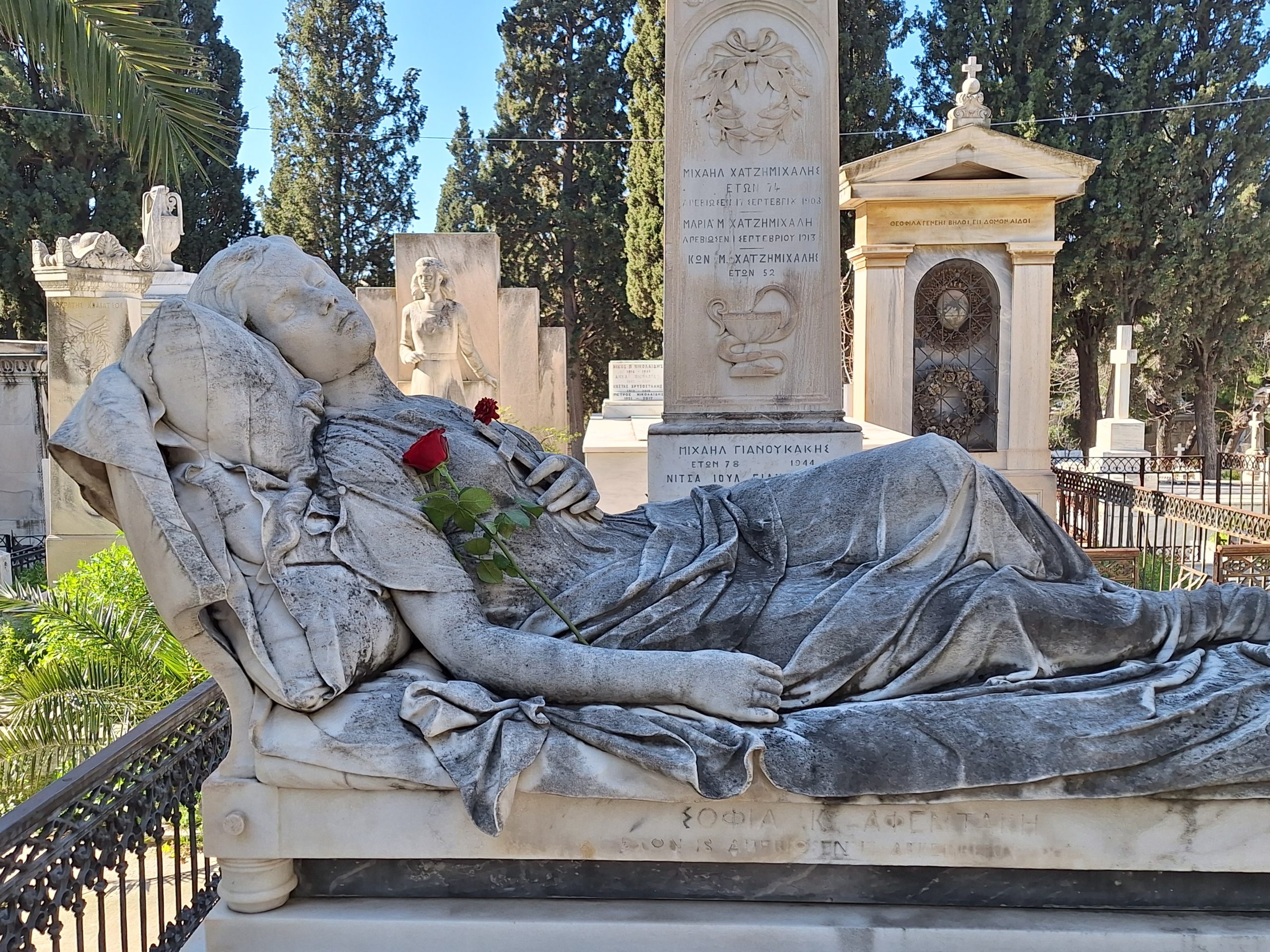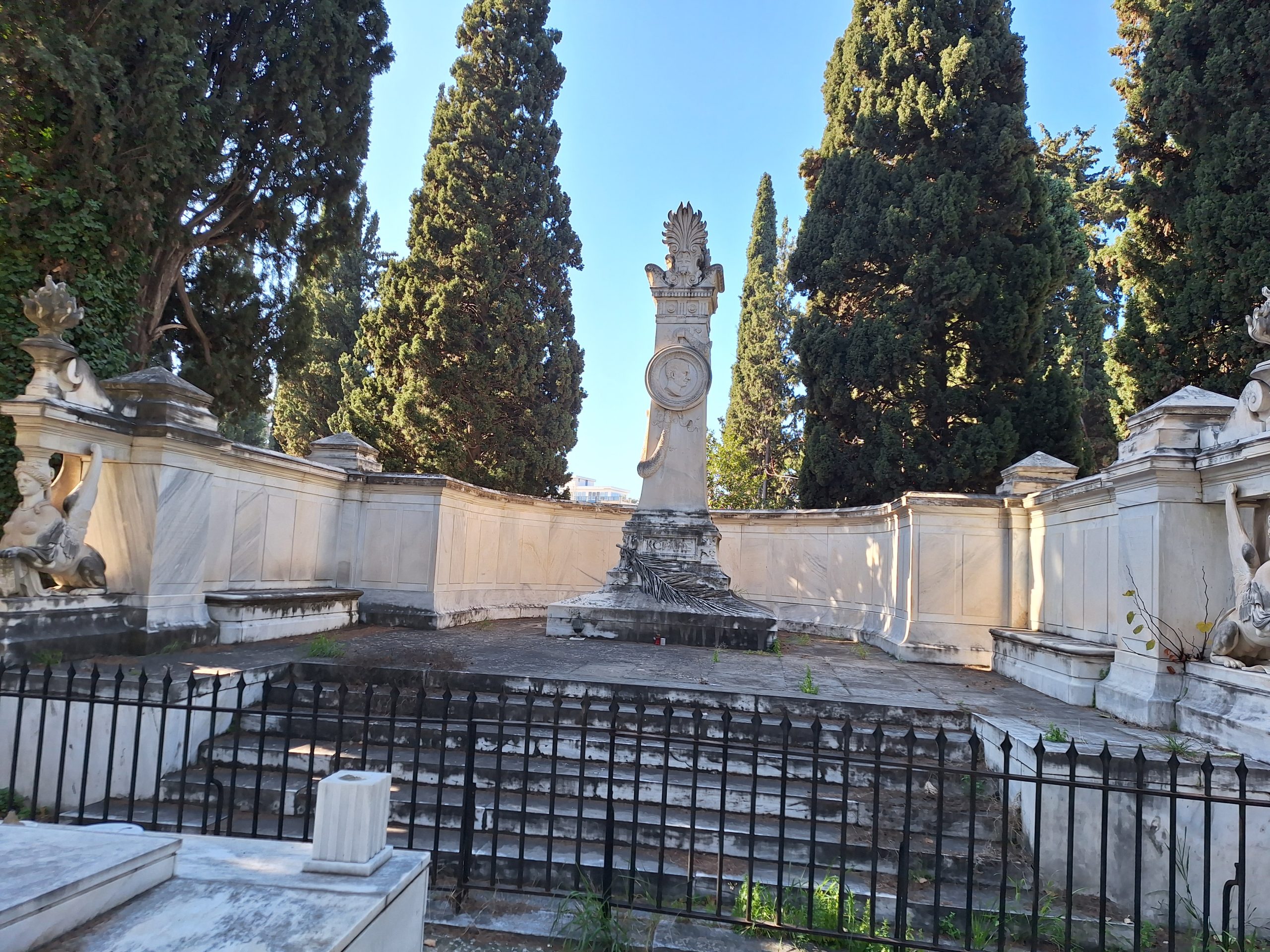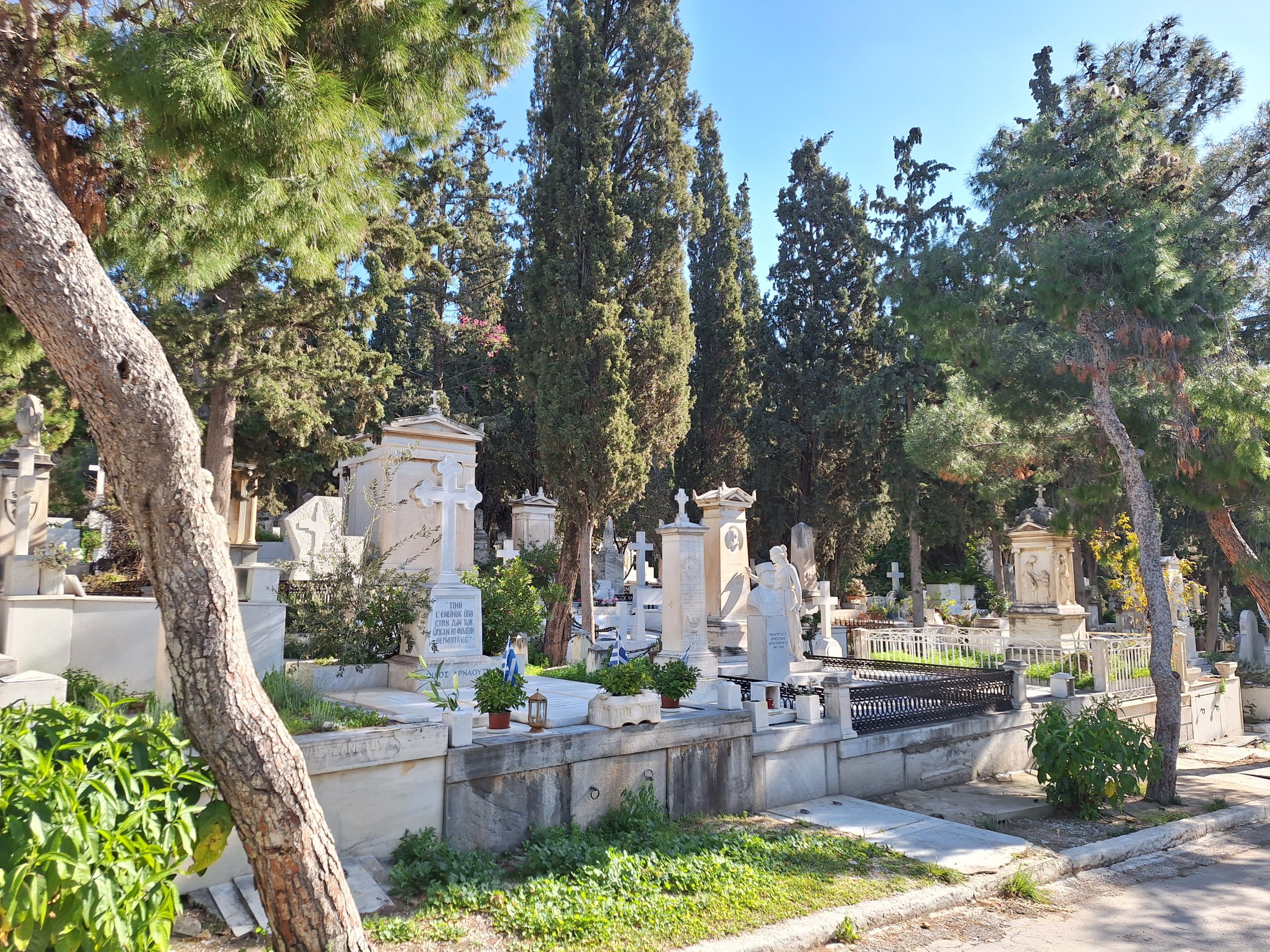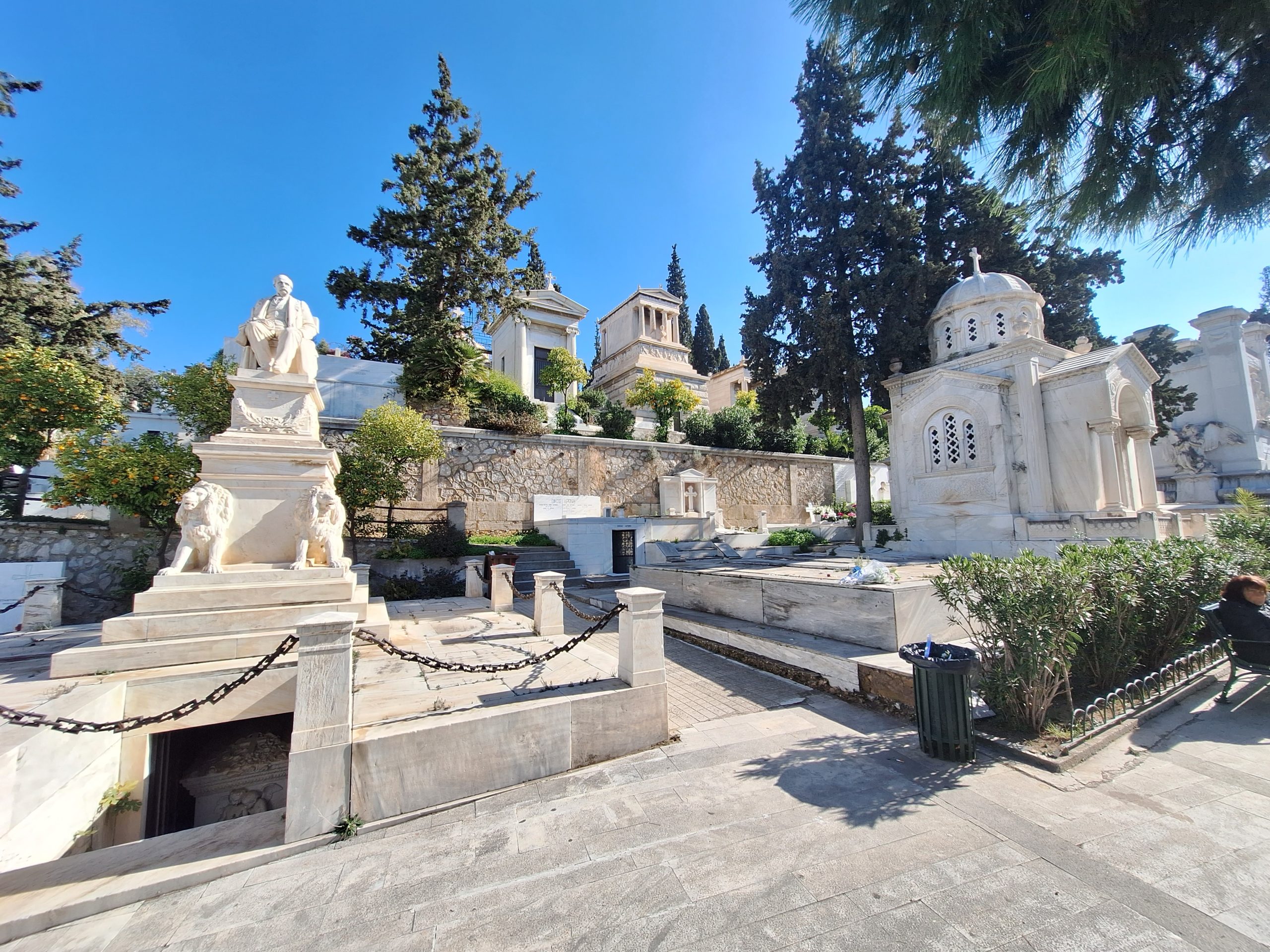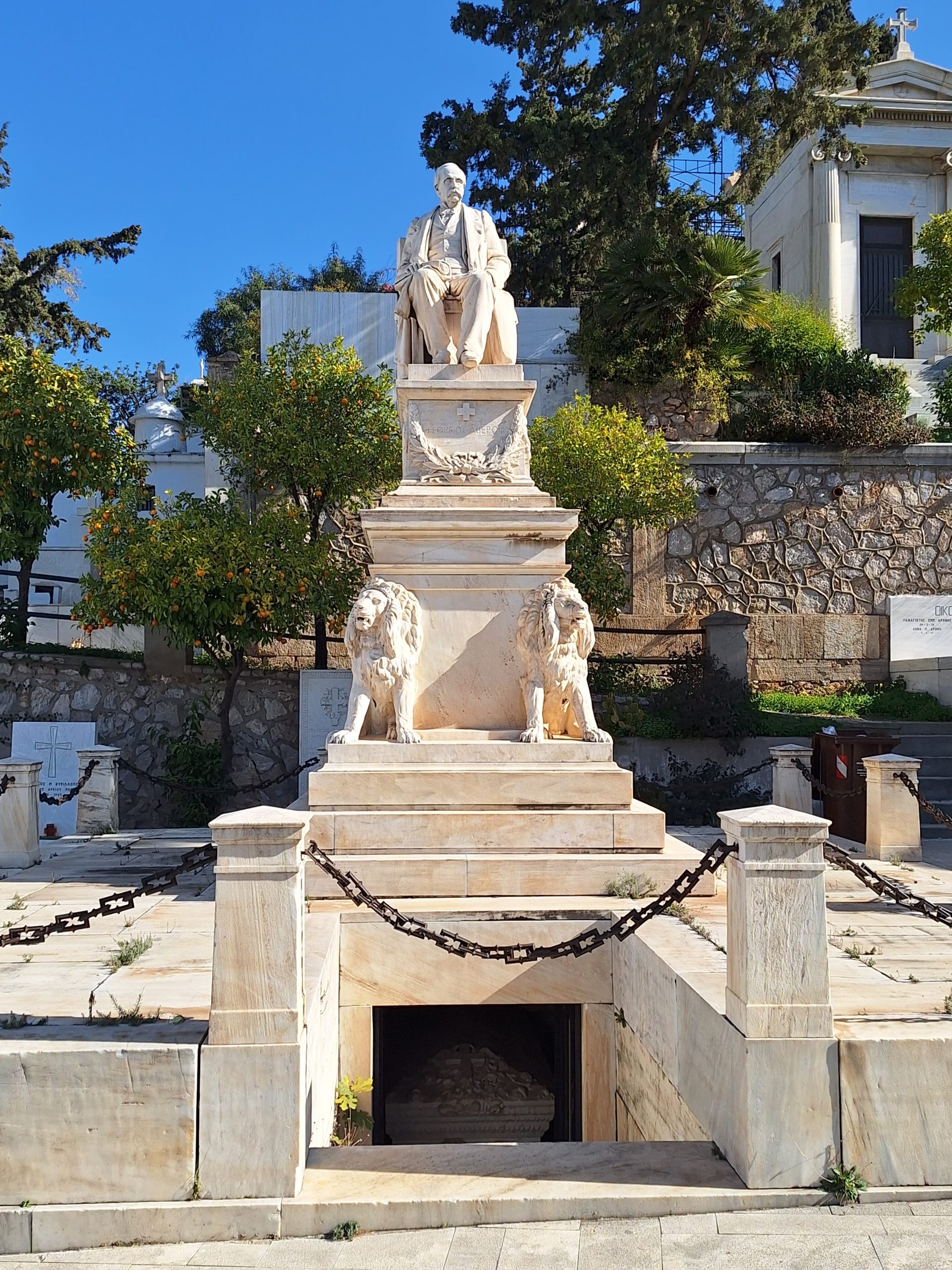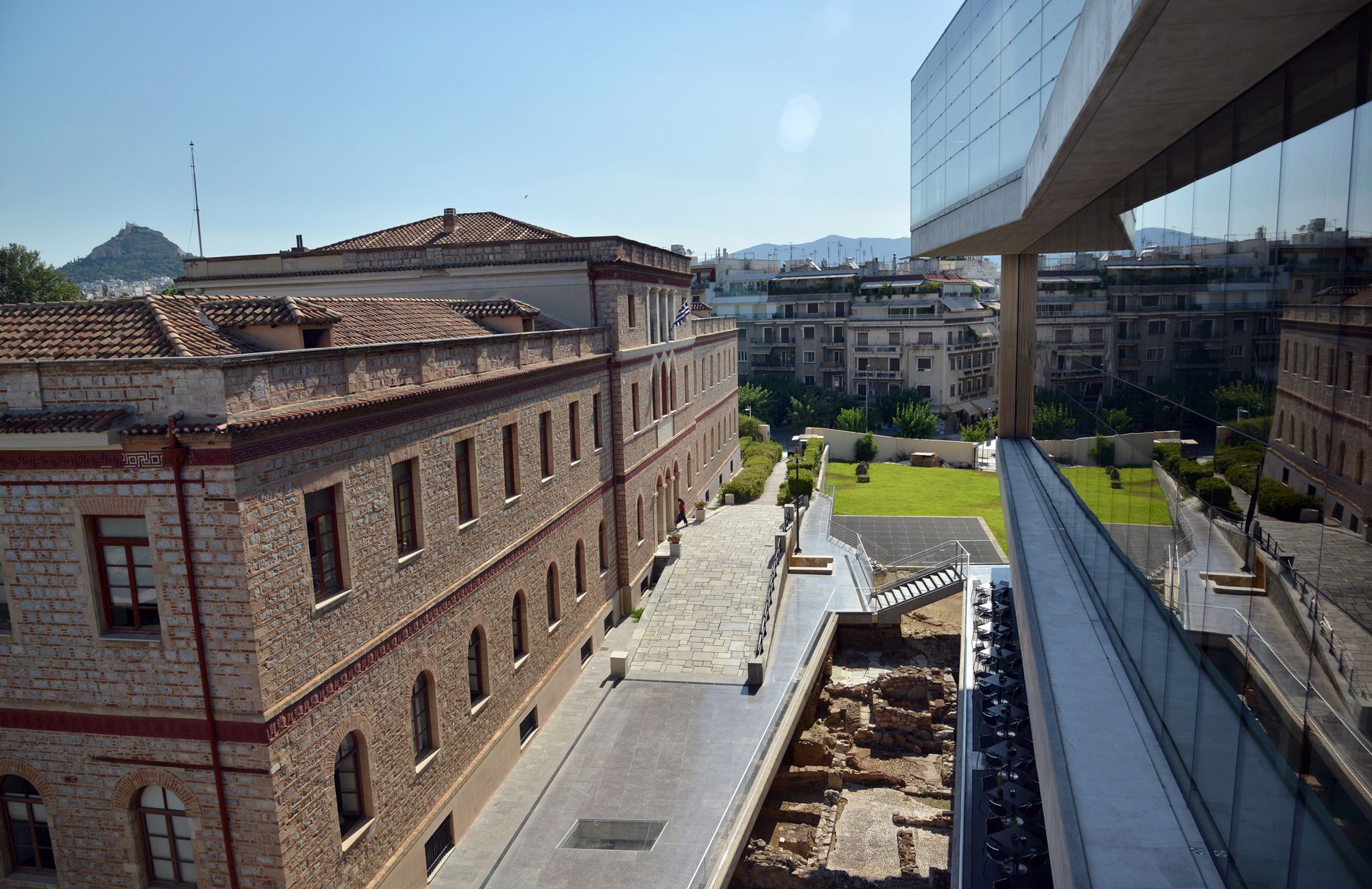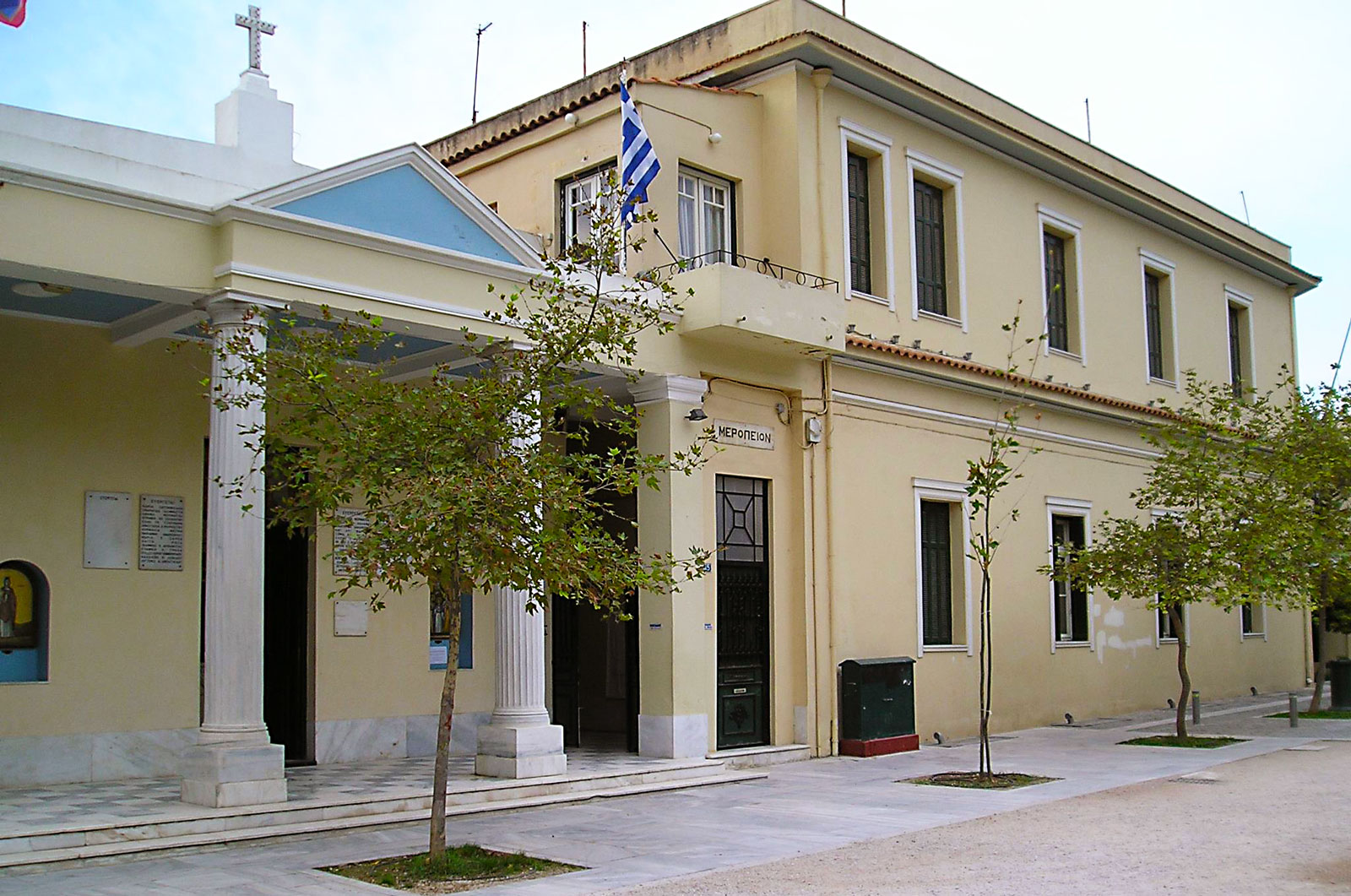First Cemetery of Athens
Useful
Information
Logginou 3, Athina 116 36, Greece
Informations
Address:
Logginou 3, Athina 116 36, Greece
First Cemetery of Athens
The First Cemetery of Athens is the oldest cemetery in Athens. It was -officially- founded in 1838 during the mayorship of Dimitrios Kallifronas (1837-1841) on an area that had been donated by Ioannis Paparrigopoulos to the Municipality of Athens in exchange for a watering fountain. It operated unfenced around the church of St. Lazarus until the Cemeteries legislation was finalized. That is why it was called the “Cemetery of Saint Lazarus”. The final shape of the Cemetery has been shaped by various departmental expansions that took place from 1859 to 1943. For the needs of these expansions, various lands were expropriated and the current street of Iliopoleos was laid out. Today it occupies an area of 162,473,022 sq.m. and includes 12,300 graves.
Burials of Foreign Religions:
As the First Cemetery expanded, Catholic and Protestant sections were created. The Protestant section was established in 1914. It’s managed by the embassies of Great Britain, Denmark, the Netherlands, and Germany on a four-year rotation.
The Jewish section was officially established in 1864, although the oldest known burial dates back to 1844. It was expanded in 1884 and again in 1910, eventually overtaking the entire Turkish cemetery.
In 1941, the Military Department was established when the German Guard of Athens confiscated part of the Protesters’ cemetery for the creation of a military department.
Sculptures and Works of Art:
The First Cemetery from a historical and artistic point of view is considered very important. It includes important sculptural works of art while almost all the famous Greeks who distinguished themselves in the fields of letters, arts and politics in recent years have been buried there. It developed under a special artistic era, of neoclassicism, with great opportunities for expression in cemeteries and is an outdoor collection, representative of 19th century sculpture in Greece. Important architects, such as Kavtanzoglou, Chiller and sculptors, such as Halepas, Vitsaris, Phytalis, Vidalis, Fillipotis, mainly from Tinos, were influenced by western art, especially by the school of the Italian sculptor Antonio Canova (1757-1822), and they produced masterpieces. It is typical that in the non-religious sections, the formation of the monuments follows a similar artistic expression. From simple tombs to mausoleums, equally remarkable sculptural works were created on the same types and using the same subjects. After all, they were realized at the same time, by the same artists and under the same artistic climate.


